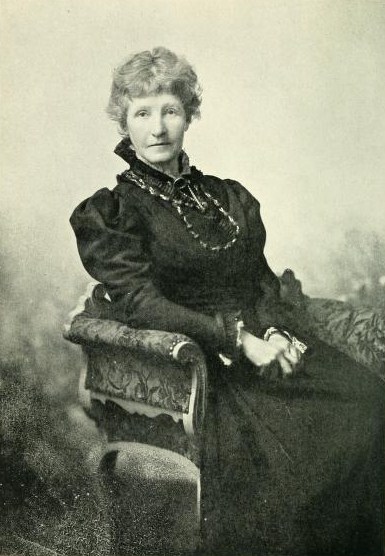Helen Allingham (Helen Allingham)

Artist. A noted watercolourist of the late 19th Century, she is primarily remembered for her images of the Surrey countryside. Born Helen Mary Elizabeth Paterson, she was raised initally in Altrincham, Cheshire, then following her father’s 1862 death during a diphtheria epidemic, the victims of which he was helping to treat, in Birmingham. Her talent having been noted from early childhood she received her first instruction from her grandmother and an aunt, both of whom were noted painters. Helen spent three years at the Birmingham School of Design then moved on to London’s Royal College of Art; soon, she was much in demand as a book and magazine illustrator, her projects including the pictures for Thomas Hardy’s “Far From the Maddening Crowd” and for Juliana Ewing’s series of novels directed at young girls, as well as regular contributions to “The Graphic”, an upscale literary weekly of the day. Following her 1874 marriage to the somewhat older Irish author William Allingham she was financially able to concentrate on watercolours and quickly built a following within the London art circle; Helen’s paintings were shown to acclaim at the 1874 Royal Academy Summer Exhibition and in 1875 she was elected to associate membership in the Royal Watercolour Society. With her 1881 relocation to Sandhills, Surrey, she began creating the body of work which constitutes her principal legacy, her increased reputation gaining her an 1886 one woman show entitled “Surrey Cottages” at the Fine Art Society, London. Her husband’s ill health forced a return to London in 1888 and after his 1889 death Helen was left with three children to support and the need for a steady income. Named the first female full member of the Royal Watercolour Society in 1890, she continued painting, even venturing to Ireland, France, and Italy in search of new subjects. Her obligations, however, necessitated a return to the literary world and resulted in several important accomplishments including Marcus B. Huish’s 1903 “Happy England” which featured 80 of her colour plates and her brother Arthur Paterson’s 1905 “The Homes of Tennyson” which was highlighted by a further 20 of her depictions. Comfortably well-off though not wealthy, Helen never retired, working until her sudden death while visiting friends. (bio by: Bob Hufford)
Born
- September, 26, 1848
- England
Died
- September, 09, 1926
- England
Cemetery
- Golders Green Crematorium
- England

